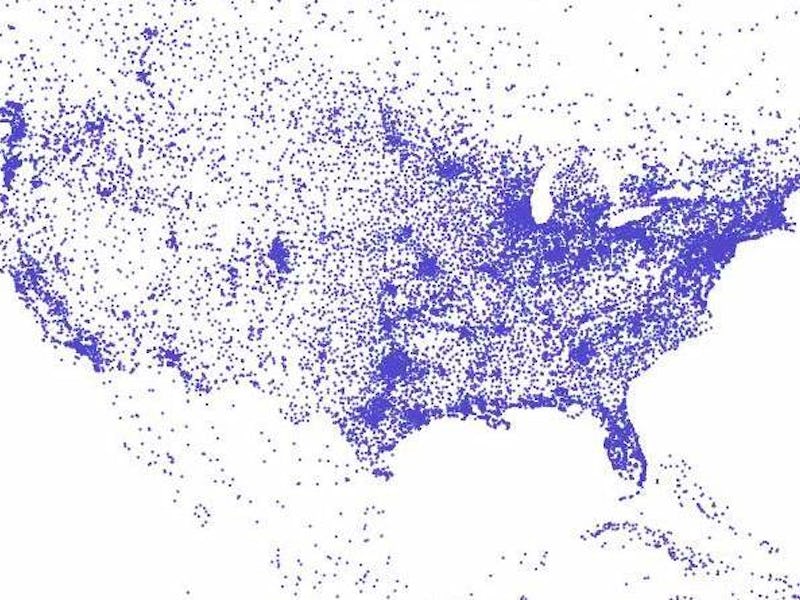
Air travel has remained incredibly resilient in the face of environmental activism and technological innovation. High-speed rail has boosted ground transport, and the internet has reduced the need for businesses to host meetings face-to-face, but there’s still thousands of flights daily. A map of the world’s airport runways by James Davenport shows just how widespread air travel has become.
In a little over 100 years, commercial air travel has made a significant mark on the world. In 1903, the Wright brothers invented the first successful airplane, a creation that would transform the First World War just over a decade later. The arrival of the world’s first commercial jetliner in 1949, the DH Comet, kickstarted the post-war era of regular airline flights
Today, flying is huge. Like, really huge. In 2014, there was an estimated 100,000 flights every day, a 2.7 percent increase from the previous year.
All that flying takes a toll: the Air Transport Action Group (ATAG) predicts around 781 million tonnes of CO2 was released into the atmosphere through flight, accounting for around two percent of all human-induced CO2 emissions.
Each blue dot in the map above represents an airport runway. Overall, there were 45,132 runways in the world when this map was created in 2014. There are still airport expansions being built today, despite the environmental cost: the British prime minister approved construction of a third runway at London Heathrow in October, despite strong opposition and a member of parliament resigning over the issue.
With such an established global network of airports, it’s easy to see why air travel is so popular. Planes can reach almost everywhere you want to go. It’s fast: the Boeing 787 Dreamliner has a cruise speed of around 647mph. Flying is also getting cheaper: air fares declined almost every month in 2016.